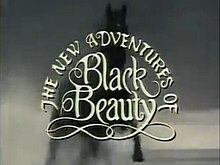Chapter 13: The Devil’s Trade Mark
byChapter 13: The Devil’s Trade Mark begins during an errand as John and Black Beauty encounter a troubling incident that reveals much about character and cruelty. As they pass a quiet field, a scene of distress catches their attention—a boy attempting to force a small pony over a gate. The boy, later recognized as young Mr. Bushby, strikes and kicks the frightened creature without mercy. Despite the pony’s clear fear and refusal, the boy continues his assault, driven by frustration rather than any need. Finally, the pony, panicked and defiant, throws the boy into a nearby hedge, then bolts for home. John watches silently, feeling a mix of disappointment and satisfaction, deciding not to intervene. His reaction is not born from malice, but from a sense that natural justice has been served. Sometimes, the consequences of cruelty arrive swiftly, without any need for words.
As John and Black Beauty near Bushby’s farm, the boy’s parents come running, their faces pale with worry. They stop John to ask if he has seen their son, concerned by the pony’s sudden return alone. John, calm and clear, recounts exactly what he witnessed. He describes the boy’s violent treatment of the pony and how the animal, overwhelmed and terrified, acted out in defense. Mr. Bushby listens closely, and though embarrassed, he does not attempt to excuse his son’s behavior. Instead, he nods grimly and promises to address the matter. His wife, though distressed, expresses gratitude for John’s honesty. The moment is tense, but it carries a powerful undertone: even among families of standing, cruelty cannot be brushed aside when brought into the light.
John’s conversation later with James Howard reflects on the deeper issue—not just the boy’s actions, but what they reveal about his character. They discuss how unchecked arrogance in youth, when mixed with power over animals or others weaker, can grow into something far more dangerous. James mentions earlier encounters where the boy acted with the same domineering attitude, bullying other stable hands and ignoring warnings. John remarks that such behavior is like “the devil’s trade mark”—a sign of deeper moral failure. The cruelty is not simply a lack of training, but an absence of compassion, a failure to see living creatures as more than tools for pride or entertainment. Both men agree that discipline from parents and firm guidance are necessary—not just to protect animals, but to shape a boy into a man with conscience.
The phrase “the devil’s trade mark” echoes as a symbolic warning throughout the chapter. It refers to a pattern of behavior that, if left unchecked, could define a person’s life. John is not harsh in his judgment, but he is firm. He believes in kindness, in fairness, and in responsibility. And when those values are violated, the result is not just harm to an animal—it’s a kind of spiritual erosion. This moment also ties into the larger themes of Black Beauty—that how people treat animals reflects who they are at their core. The pony’s terror, the boy’s disregard, and John’s refusal to excuse what he saw are all part of a broader moral compass guiding the narrative.
This chapter serves not only as a reflection on a specific incident but also as a broader commentary on empathy, justice, and the role of adults in shaping younger generations. Mr. Bushby’s willingness to take the matter seriously offers hope, but it also reinforces the need for active parenting and moral instruction. Children, like animals, need care and guidance—not indulgence or unchecked power. John’s role is quiet but firm, reminding readers that morality is taught by example as much as it is by words. Through steady action, measured response, and unwavering standards, those who witness cruelty must not remain silent. The lesson isn’t about punishment alone, but about instilling a sense of right and wrong that lasts beyond a single moment.
In essence, “The Devil’s Trade Mark” does more than tell a tale of misbehavior—it uncovers how casual cruelty can become a habit and how conscience, if ignored, leaves marks as deep as any scar. It champions the quiet dignity of those who stand up for the voiceless and reminds readers that even small acts of justice can leave lasting impressions. The chapter closes not with rage or dramatic conflict, but with the understanding that responsibility begins at home, and that respect—both for animals and each other—is a lesson that must be taught early, and often.

